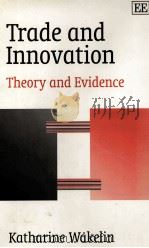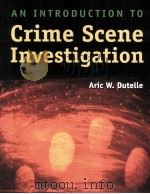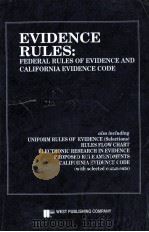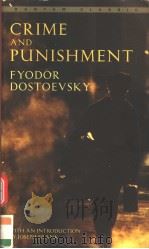《CRIME SCENE SEARCH AND PHYSICAL EVIDENCE HANDBOOK》
| 作者 | 编者 |
|---|---|
| 出版 | U.S.DEPARTMENT OF JUSTICE |
| 参考页数 | 189 |
| 出版时间 | 1973(求助前请核对) 目录预览 |
| ISBN号 | 无 — 求助条款 |
| PDF编号 | 812922688(仅供预览,未存储实际文件) |
| 求助格式 | 扫描PDF(若分多册发行,每次仅能受理1册) |

CHAPTER ⅠIntroduction1
The Purpose of a Crime Laboratory1
Involvement of the Crime Laboratory in Crime Scene Search2
Criminalistics Defined2
CHAPTER ⅡBasic Concepts Concerning Physical Evidence3
Introduction3
Major Considerations in the Establishment of Identity3
Mathematical Probability4
Class Characteristics and Similarity6
Individuality6
Comparisons8
Rarity8
Exchange9
CHAPTER ⅢProtection of the Crime Scene11
Introduction11
Dimensions of a Crime Scene11
Initial Actions on Arrival at the Scene of a Crime12
CHAPTER ⅣAn Overview of Techniques for Processing the Crime Scene14
Introduction14
Legal and Scientific Requirements14
The Preliminary Examination of the Scene16
Recording the Crime Scene16
The Detailed Search of the Scene18
A Recommended General Method of Crime Scene Search18
Trace Material Collection19
Tool Marks20
Samples of Body Fluids20
Standards of Items To be Secured20
Fires and Explosions--Special Considerations of Search21
Special Considerations in Searching Outdoor Crime Scenes22
CHAPTER Ⅳ (Concluded)24
Vehicle Searches24
Exterior Search24
Interior Search25
Search of a Victim27
Actions by the Investigating Officer at the Hospital or Morgue28
Search of the Uninjured Suspect31
CHAPTER ⅤDetailed Procedures for Recording the Crime Scene32
Introduction32
Note Taking32
Use of the Investigator's Notes34
Sketching the Crime Scene35
Information to be Included in the Sketch35
Some General Considerations Involved in Crime Scene Sketching36
Sketching Methods36
Coordinate Methocd36
Triangulation Method38
Cross-Projection Method38
"Rough" and "Smooth" Sketches38
External Wound Chart41
Photographing the Crime Scene41
Investigative Photographs41
Admissibility of Photographs as Evidence41
Identification of Photographs42
Custody of Photographs42
General Considerations in Field Photography42
Critical Photographic Requirements43
Photographing the Arson Scene43
Photographing the Burglary Scene44
Photographing the Vehicle Accident44
Photographing Deceased Persons45
Photographing Live Victims and Suspects45
Photographing Fingerprints45
CHAPTER ⅥFingerprints47
Importance of Fingerprints as Physical Evidence47
Definition of Fingerprints47
Basis of Identification of Fingerprints48
Limitations of Latent Prints48
Conditions Which Affect Latent Prints50
Responsibility of the Crime Scene Investigator in Collecting Fingerprints51
Prints Which Require No Further Developing52
Method of Developing Fingerprints52
Developing Prints on Nonabsorbent, Hard, Smooth Surfaces53
Developing Prints on Absorbent, Porous, Smooth Surfaces57
Marking and Identifying Fingerprint Lifts58
Collection of Elimination Fingerprints58
CHAPTER ⅦBody Fluids60
Introduction60
The Scientific Basis of Body Fluid Examination60
Secretors and Nonsecretors60
Relationship to Investigations61
Blood and Bloodstains61
Forms of Blood Evidence61
Requests for Laboratory Testing:Laboratory Capabilties62
Procedures to be Used in Searching for and Collecting Blood Samples62
Relating Bloodstains to Physical Activity63
Shapes of Bloodstains63
Specific Methods of Collecting Blood and Bloodstains65
Moist Blood Samples66
Seminal Stains67
CHAPTER ⅧTrace Evidence69
Introduction69
Trace Evidence Associated with Clothing69
Recovery of the Clothing of a Victim71
CHAPTER Ⅷ(Concluded)71
Cloth Fragments and Impressions71
Threads, Fibers, and Hair74
General74
The Properties of Hair75
Information the Criminalistics Laboratory Can Derive From Hair Sample Analysis75
Possible Conclusions Concerning Hair Sample Analyses75
Crime Scene Procedures With Respect to Collecting Hair Samples77
Fibers78
The Examination of the Crime Scene For Fibers78
String, Rope, and Containers79
String79
Ropes79
Containers79
Soils, Rocks, Minerals and Debris80
General80
The Value of Soils and Rocks as Evidence80
The Evidence Value of Debris81
General Collection Procedures81
Special Notations Concerning Samples83
CHAPTER ⅨFirearms84
Introduction84
Terms Used84
Handling Firearms and Ammunition Discovered in the Search84
Processing Damaged or Rusty Weapons85
Lifting Latent Prints From Firearms86
Marking Firearms86
Examination of Firearms by the Laboratory91
Marking Bullets and Cartridge Cases91
Bullet Files Maintained by the Criminalistics Laboratory94
Live Ammunition as Standards96
Serial Number Restorations96
Powder Residue Tests97
CHAPTER ⅩTool Marks and Broken Metals99
Introduction99
Tool Marks99
Definition99
The Evidence Value of Tool Marks101
Class and Individual Characteristics of Tools101
Information and Leads That Can be Derived From Tool Marks103
Special Considerations in Collecting Tool Mark Evidence103
Marks103
Too Is104
A Warning Concerning Collection of Tools and Tool Marks104
Marking, Packaging and Preservation of Tool Mark Evidence104
Recording Tools and Tool Marks105
Crime Laboratory Procedures for Processing Tool Mark Evidence106
Broken Metals106
CHAPTER ⅩⅠIllegal Drugs and Drugs That are Subject to Abuse110
Introduction110
Drug Addiction and Abuse - Implications to the Crime Scene Investigation110
The Commonly Abused Drugs111
Heroin112
Cocaine112
Marihuana114
Hashish117
Hallucinogenic Drugs117
Barbiturates117
Amphetamines118
Methamphetamines119
Toxic Vapors119
Some Important Cautionary Rules in Collecting Drug Substances120
The Use of Field Test Kits for Identification of Suspected Drug Substances121
CHAPTER ⅩⅡChemical Materials124
Poisons124
Alcohol127
Alcoholic Poisoning127
Chemical Materials Resulting From Explosions128
Diffuse Explosion129
Concentrated Explosion129
The Investigation of Fire132
CHAPTER ⅩⅢPreparation of Casts and Collection of Residual Prints134
Introduction134
Choice of Casting Materials134
The General Rules for Processing Impressions134
Protecting the Impression135
Preparation of the Impression Before Casting135
Casting Materials141
Preparing the Plaster141
Pouring the Plaster141
Special Procedures for Making Casts of Impressions in Snow142
Marking Casts142
Making Casts From Tire Tracks143
Preserving Soil Adhering to the Finished Cast143
Residue Prints144
General144
Photographs of Impressions and Residue Prints144
Listing a Residue Print144
Importance of Cuts and Other Unusual Marks in Residue Prints146
Preparing Standards of Residue Prints146
Casting Tool Marks147
CHAPTER ⅩⅣPaint and Glass150
Introduction150
Paint150
Examination of Paint150
Collection of Paint for Examination151
CHAPTER ⅩⅣ (Concluded)152
Glass152
Glass Fragmentation152
Fragment Examination154
Glass Identity From Physical Properties154
Collecting Fragments When Direction of Force is in Question154
When Direction of Force is Not a Question154
Search of a Suspect154
CHAPTER ⅩⅤ155
Questioned Documents155
Introduction155
Preliminary Examination155
Alterations155
Mechanical Writing Devices156
Document Standards159
Collection of Document Standards160
Handwriting Identification and Handwriting Samples161
CHAPTER ⅩⅥIdentification of the Unknown Dead165
Introduction165
Examination of Clothing165
Personal Effects Examination165
Visual, External Examination of Body166
Other Suggested Procedures167
Internal Examination of the Body167
APPENDIX AHow to Collect, Mark, Preserve, and Pack Physical Evidence168
APPENDIX BNational Directory of Criminalistics Laboratories174
INDEX187
1973《CRIME SCENE SEARCH AND PHYSICAL EVIDENCE HANDBOOK》由于是年代较久的资料都绝版了,几乎不可能购买到实物。如果大家为了学习确实需要,可向博主求助其电子版PDF文件(由 1973 U.S.DEPARTMENT OF JUSTICE 出版的版本) 。对合法合规的求助,我会当即受理并将下载地址发送给你。
高度相关资料
-
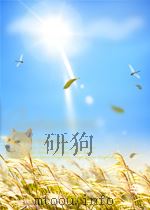
- CRIME AND INSANITY
- WILLIAMS AND NORGATE
-

- Sensor Fusion:Spatial Reasoning and Scene Interpretation
- 1989 The Society of Photo-Optical Instrumentation Engineers
-

- THE NEW SKEPTICISM
- 1992 PROMETHEUS BOOKS
-
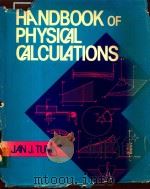
- HANDBOOK OF PHYSICAL CALCULATIONS
- 1976 MCGRAW-HILL BOOK COMPANY
-

- HANDBOOK ON CRIME AND DELINQUENCY PREVENTION
- 1987 GREENWOOD PRESS
-

- HANDBOOK OF THE LAW OF EVIDENCE
- 1954 WEST PUBLISHING CO.
-

- PHYSICAL LABORATORY HANDBOOK
- 1909 AMERICAN BOOK COMPANY
-

- THE EVIDENCE HANDBOOK
- 1943 TRAFFIC INSTITUTE
提示:百度云已更名为百度网盘(百度盘),天翼云盘、微盘下载地址……暂未提供。➥ PDF文字可复制化或转WORD
